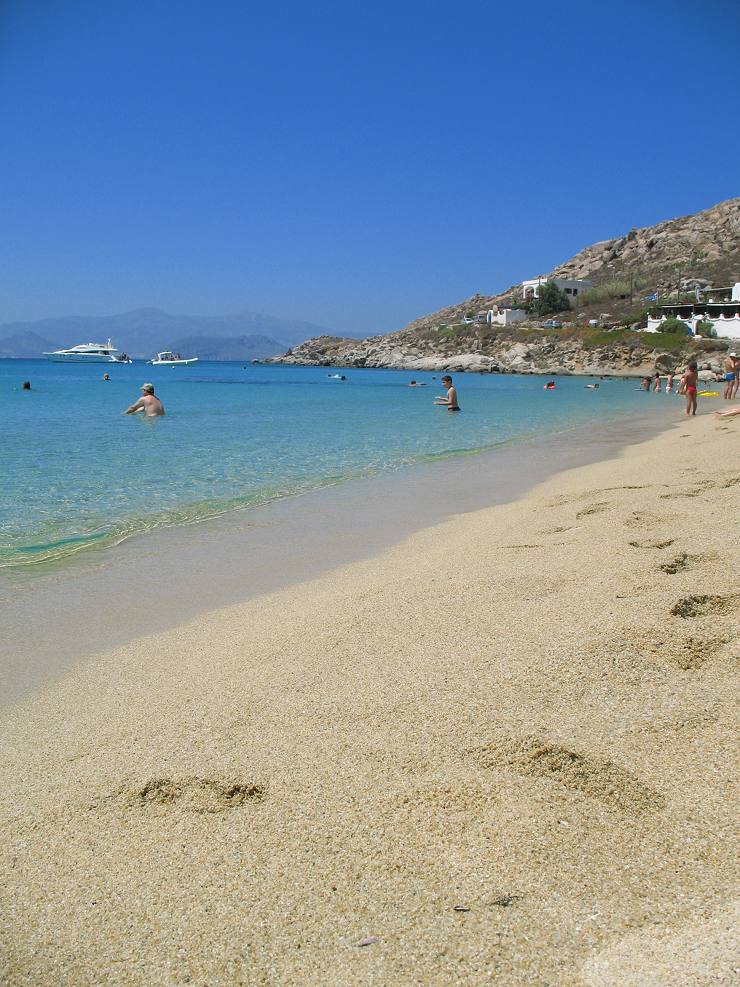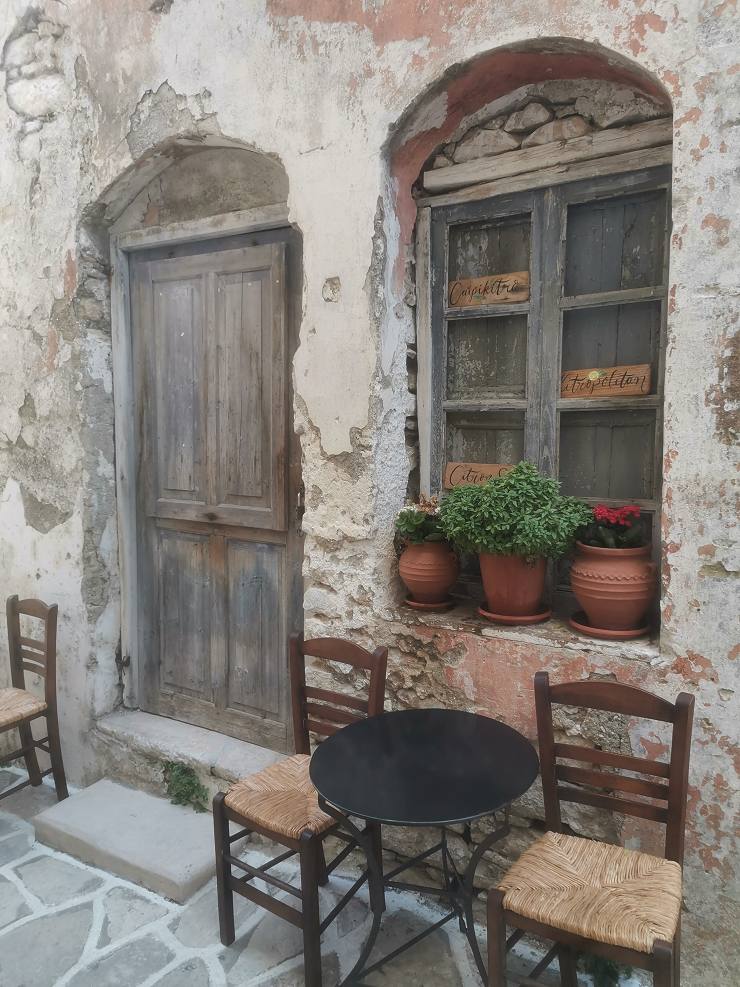Naxos Town, Greece
Naxos Town, Greece
Naxos offers wonderful routes to explore because its landscape is varied, offering stunning views that fascinate the nature lovers. High mountains, fertile valleys, plateaus, springs, rivers, caves, huge beaches, sand dunes with cedar trees growing on them, all existing harmoniously on this small piece of earth.
For those of you who are interested in the past and in the history, the historic value of the monuments of Naxos is impressive. The civilisations of ancient Greece, Byzantium, and the venitian era imprinted their mark heavily on the island's identity. Perhaps nowhere else in the world, there are there so many important monuments from so many different periods in history, on such a small piece of earth.
In Naxos there are about 30 largε and small villages, mostly hidden in the inland, whose inhabitants maintain the old way of life, offering the traveller unique images. We would like to suggest some destinations, but you will certainly discover much more on your own!
Beaches
Agios Prokopios (5 km South of Hora)
A famous and well set up tourist resort, with all kinds of shops to suit the needs of the holidaymakers. The sea is crystal clear and kilometres of a grained sandy beach hug the sheltered bay. Facilities for water sports are available. There are facilities for sea sports. An important land mark is the salt lake, “the red lake“, with herons often standing on its banks.
Plaka (7 km south of Hora)
A sandy beach several kilometres long. A dirt road seperates the beach from the plain, which comes to an end here. There are several hotels, rooms, tavernas and bars, which are spread out along the beach. Untill the beginning of the 80's Plaka was popular with the “hippies”. Today it is peaceful and relaxing, with facilities for water sports.
Mikri Vigla (18 km south of Hora)
The beach is made up of two beautiful sandy bays, Mikri Vigla and Parthenos, which are seperated by the rock of Mikri Vigla. Because of the ideal water conditions, Parthenos has become a popular meeting place for windsurfing fans from all over the world. There are hotels, rooms and a few tavernas. Near the island of Parthenos, at the bottom of the sea, there are remains of a sunken settlement.
Aliko (20 km south of Hora)
A magical sandy beach with an exotic atmosphere. There are sand dunes and clusters of chedar trees which thrive in the hot sand and provide shade for the swimmers. Tthis area is perfect for relaxation far away from the crowds. There are some tavernas in the area.
Moutsouna (39 km from Hora)
A pretty seaside settlement, with beautiful sandy beaches, rooms to let and attractive tavernas situated right on the beach, on the eastern shores of Naxos. The road to Moutsouna is a steep winding downhill road, which starts from the outskirts of Apeiranthos.
The new coastal road starts from Moutsouna going in the southerly direction and leading to the wonderful beach of Psili Ammos and further south still to the gulf of Panormos.
Villages
Halki ( 17 km from Hora)
It is situated in the centre of Naxos, in the plain of Tragea, the richest and most fertile area of the island. In Halki, the beautifulold mansions are evidence of the prosperity of the village in previous centuries. Monuments, which are worth a visit, are: the church of Panagia Protothoni (9th – 10th century) and the church of Agios Georgios Diasoritis (11th century), the Venetian towers Gratsia and Markopoliti and the traditional citron distillery near to the central square.
Apeiranthos (32 km from Hora)
It is built in the heart of the mountain area of Naxos, at the foot of Mount Fanari, between two valleys, with vineyards and orchards. It is called “the marble village“. Narrow marble paved mule tracks, often covered by archways, Venetian defence towers, stone houses with the same kind of architectural details and small squares. The three museums in Apeiranthos are well worth a visit (the archaeological, geological and folk museums).
Potamia (9 km from Hora)
Potamia is actually made up of three small villages (Ano-, Mesi- and Kato Potamia) built along alush green valley amongst mixed fruit orchards. Old windmills add a special charm to the area, which is ideal for walking.
Sightseeing
Kouros (Flerio)
At Flerio, near he village of Melanes, there is a half finished male statue ( Kouros), which has been left lying in an olive grove, in the place where the ancient marble carvers left it. It dates back to the 7th century B.C. and is 6.4 metres tall.
Kouros (Apollonas)
Near the village Apollonas, at the entrance to an ancient quarry, there is a half finished “Kouros“ (male statue) lying on the ground, which has never been moved from this spot. The statue is 10.45 metres high, dates from the beginning of the 6th century B.C. and was probably dedicated to the God Dionysus.
Dimitra's Temple
The Sanctuary of Giroulas, near the village of Sangri, was the religious centre of a predominantly farming area and was dedicated to the Goddess Demeter (the goddess of fertility). It is one of the best preserved ancient buildings and it dates back to 530 B.C. The temple was built completely out of white marble (including the roof).
Today the restoration of the temple is complete and there is a museum.
The church of Panagia Drosiani
The church of Panagia (Virgin Mary) Drosiani, near the village of Moni, is one of the best-preserved monuments from the early Christian era in the whole of southeastern Europe, with wonderful frescoes painted in layers. The eldest frescoes are from the 7th century.
The fortified monastery of Fotodotis Christ
The fortified Monastry of Fotodotis(Light Giver) Christ is situated outside Danakos village, in a wonderful position, on the eastern slopes of Mount Zas and boasting particularly interesting architectural details. It is dates from the 9th century. Local legends link the monastery with the Byzantine Empress Irene.
The tower of Agia
It is situated in a strategic spot near to the most northerly point of the island, at the height of 220m. The tower (destroyed recently by a fire) is dates from the 17th century and is visible from the road. Not far from the tower amongst plane trees and running water is the old monastery of the Holy Virgin with its miraculous icon, which according to tradition, was found in the sea.



